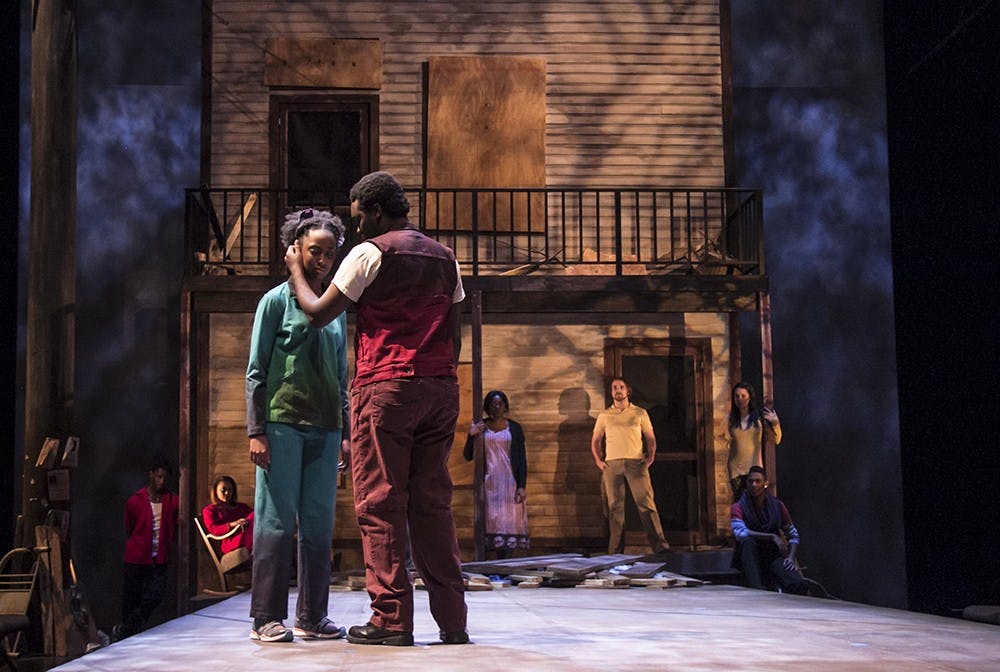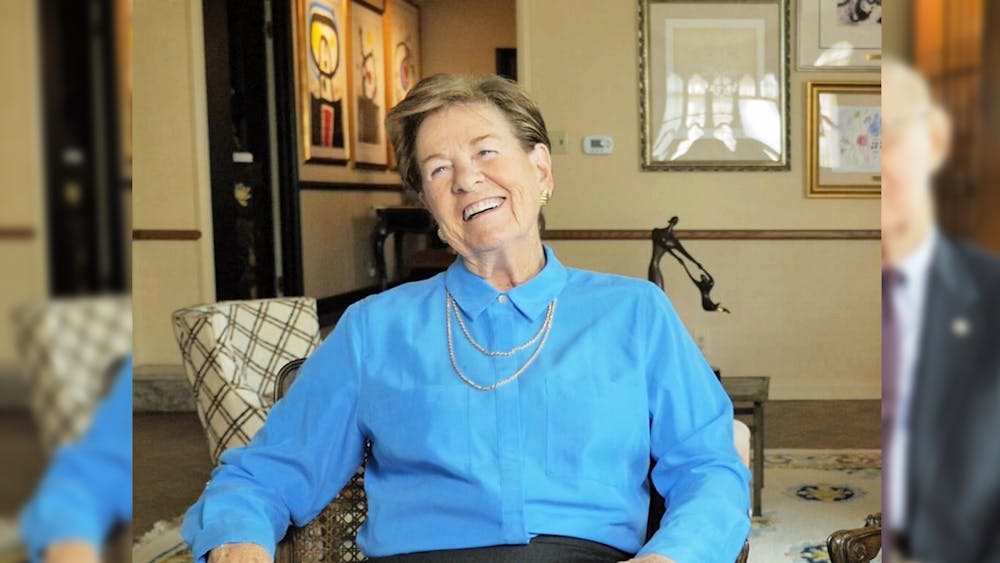McCraney’s play follows protagonist Oya, played by IU alumna Patricia Millard, as she pursues her goal to become a track star while navigating the complex path to adulthood.
Director David Koté said he chose this show because of a positive experience with author McCraney when Koté taught at a high school in Atlanta a few years back.
Koté said he originally wanted to take his students to see the show at Alliance Theatre, but they were unfortunately unable to make it.
“Tarell McCraney came and spoke to my students as part of community outreach,” Koté said. “What happened is, my students were supposed to go to a matinee at the theater but weren’t able to make it out to the show. (McCraney) had the cast come to the school and do the show for my students.”
Koté said some of the actors in that production were alumni of the high school, so it made the play all the more relatable and enjoyable for his students.
“It made the play resonate more because you took it out of the elements of theatrical space and did it in this high school,” Koté said.
Koté said this is his first main-stage show, though he has directed other IU productions before.
He said his greatest hope is the production attracts both aficionados and those new to theater because of its nontraditional approach to a classic plot.
“The show is kind of an interesting play because it’s something in a different kind of way,” Koté said. “To tell a story that you don’t normally see here, it’s got the draw to the theater who wouldn’t normally come because they see something that’s reflective of their experience. Basically, (the goal is) to bring a different theatrical experience to the IU stage.”
Koté said he also wants both the cast and theatergoers to truly connect with Oya through the successes and struggles.
“I think just the show is an opportunity for the actors and the audience to kind of come together in a place that makes the theater come alive with energy,” Koté said. “Theater is best when audience gets to be part of the storyteller.”
Choreographer Kenneth Roberson said he always has fun throughout the show process: teaching, learning and even the hiccups along the way.
He couldn’t pinpoint just one “favorite” aspect of the show.
“My favorite part of anything is the process,” Roberson said. “Working with this young director who is so passionate and has so much knowledge about this piece, it’s really not a traditional work. It speaks to such young characters. It’s just so different than anything I’ve done. But the process is still the process. The journey always excites me.”
Roberson, who has worked around the globe and on Broadway productions for the past 20 years, said he came to IU to help inspire young thespians to embrace their creative potential.
“I felt this aching that I needed to share my experience with young people at this age and I needed to obtain a little more structure in my life as an artist and everything converged and led for me to come here,” Roberson said.
Roberson said everyone should come see this production because it bridges the gap between theater and life.
“It’s theater like no one has ever thought about,” Roberson said. “The way it’s staged, the way it’s written: it speaks to the youth. It will speak to young, college-age students and college-age lovers of new frontiers. If people feel that they are not into coming to theater, coming to drama, this would change their mind.”
Junior Yusuf Agunbiade plays Elegba in the show. He said aspects of the show look through a different cultural lens than other IU productions.
“The play is molded in a sense of theatricality, reminding the audience that they are a part of the theatrical experience,” Agunbiade said. “The play heavenly incorporates traditional Yoruba beliefs, given that all of the characters are representations of deities or facets of the Yoruba culture.”
The Yoruba originate from southwestern Nigeria and southern Benin and they are one of the most populous ethnic groups in Africa.
Junior Kevin Renn said the tale also includes a romantic subplot in which his character is caught in the middle.
“I play Ogun and I’ve known her for a long time and I’m trying to get her interested in me, in a way, and there’s sort of a love triangle between Ogun, Oya and Shango, who is played by Ian Martin,” Renn said. “My character in this, I’m very enthralled by her and wanting her affection.”
Renn said he had not read the script before deciding to audition, and he advises any prospective audience members to come in without any preconceptions.
“This is one of those shows that, it’s very beautiful to read but it’s even more beautiful to see on stage,” Renn said. “A lot of people I know have not read the production. They want to go in with an open mind because there’s a lot to it. It’s a very complex show. There’s nothing subtle about this show whatsoever.”
One of the challenges Agunbiade said he faced was breaking from the traditional realist approach to storytelling to fully immerse in the spiritual approach.
“I think one of the big challenges that I, as well as the cast, have found with this play is that it doesn’t follow the common structure of lots of other plays, it being that it’s not molded in complete realism, rather it’s a mixture of that, spiritualism and theatricality,” Agunbiade said.
Renn said his greatest challenge was connecting with his character’s true motivations and internal struggles, but motivation from Koté to look within helped him reach that understanding.
“David Koté, our director, has been really pounding on us to really think about your character and what they want and what they’re trying to go after,” Renn said. “He makes you really rethink the play. And if you can’t figure it out and ask him, he’ll say ‘You have to figure it out yourself.’ It’s really fun when it just dawns on you. You’re like, ‘OK, now I get it.’”
Agunbiade said the experience has increased his teamwork skills and made him a stronger actor in the process.
“Every play presents new challenges for the artist, and this one has definitely had its fair share,” Agunbiade said. “But most of all, it’s allowed me to further explore how effective an ensemble cast can be as well as how in tuned and connected each member has to be in order for a play, such as this, to be a success.”
Agunbiade looks to an old adage for what he hopes people take away from this production.
“There’s a saying that you’ll understand Shakespeare more when it’s performed rather than reading the play by yourself,” Agunbiade said. “I believe this play adheres to that notion a little bit. In order to fully experience this play, one needs to see it staged, one needs to see it in full production, because generally the playwright writes the play with the intention of it being produced. The production is the final ingredient.”






